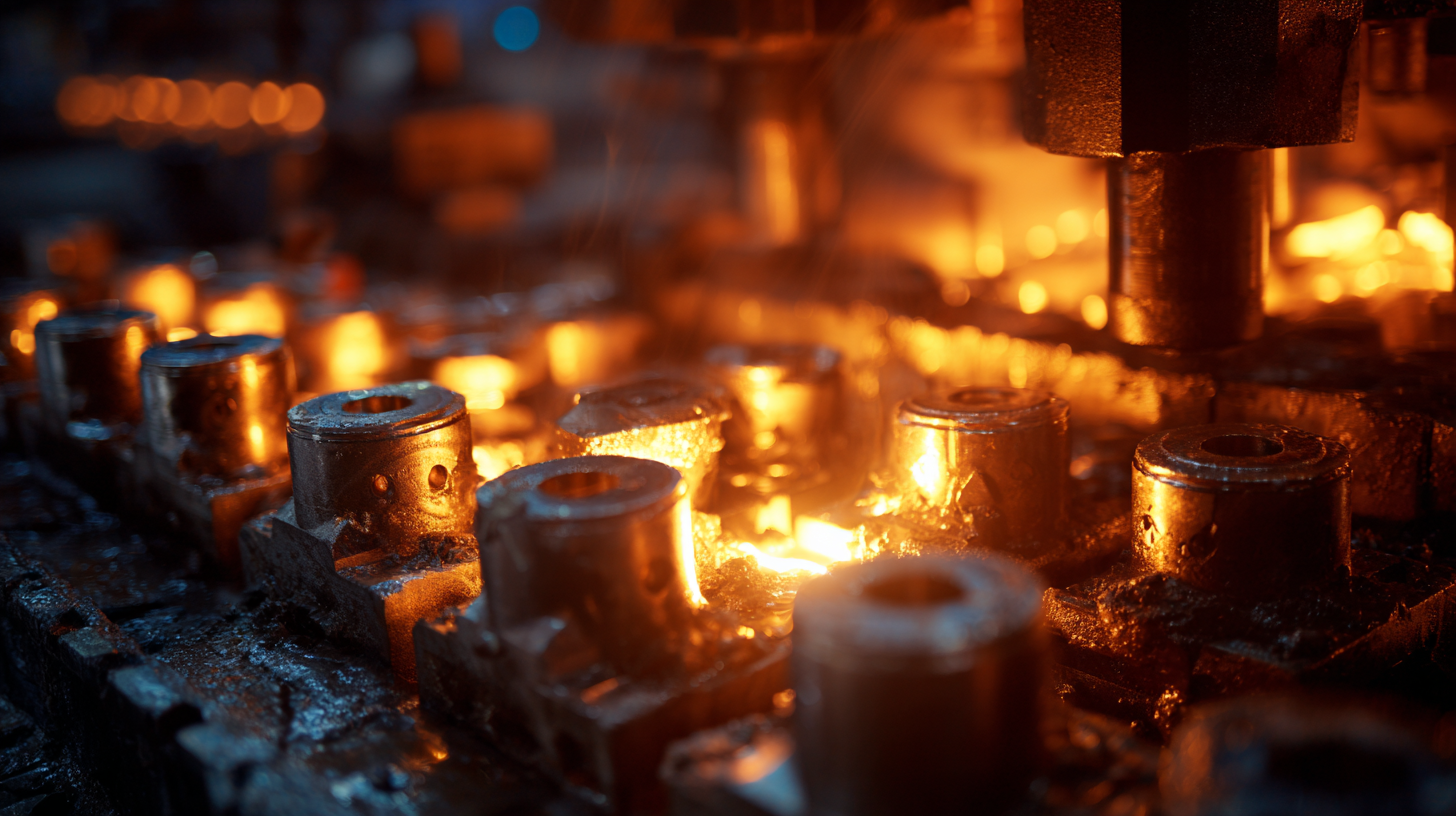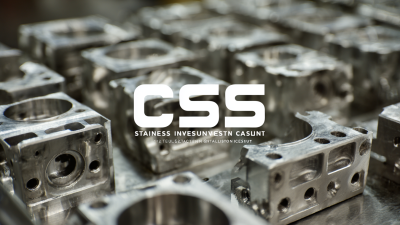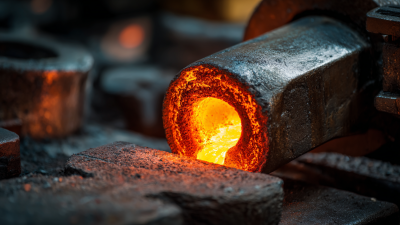 In the realm of modern manufacturing, the evolution of casting techniques plays a pivotal role in enhancing
production efficiency and
product quality. One particularly noteworthy advancement is the utilization of
Tin Bronze Precision Casting, which combines the superior properties of tin bronze with the precision of advanced casting methods.
This approach not only improves the mechanical performance and corrosion resistance of components but also allows for
intricate designs that are challenging to achieve with traditional casting methods. As industries strive for
higher standards of reliability and durability,
Tin Bronze Precision Casting emerges as a vital solution, offering a blend of craftsmanship and innovation.
This exploration delves into the myriad advantages of this technique, highlighting its relevance in today's competitive manufacturing landscape and its potential to revolutionize various applications across sectors.
In the realm of modern manufacturing, the evolution of casting techniques plays a pivotal role in enhancing
production efficiency and
product quality. One particularly noteworthy advancement is the utilization of
Tin Bronze Precision Casting, which combines the superior properties of tin bronze with the precision of advanced casting methods.
This approach not only improves the mechanical performance and corrosion resistance of components but also allows for
intricate designs that are challenging to achieve with traditional casting methods. As industries strive for
higher standards of reliability and durability,
Tin Bronze Precision Casting emerges as a vital solution, offering a blend of craftsmanship and innovation.
This exploration delves into the myriad advantages of this technique, highlighting its relevance in today's competitive manufacturing landscape and its potential to revolutionize various applications across sectors.
Tin bronze precision casting is increasingly becoming a preferred choice in high-tech manufacturing applications, particularly due to its exceptional mechanical properties and resistance to corrosion. Industry reports indicate that tin bronze exhibits an impressive tensile strength range of 400-800 MPa, making it suitable for demanding environments where durability is paramount. Furthermore, its superior wear resistance ensures longevity, significantly reducing maintenance costs and downtime for high-performance machinery and components.
In addition to these mechanical advantages, the alloy's excellent fluidity during the casting process allows for intricate designs with tight tolerances. According to a recent study published by The Journal of Materials Science, components cast from tin bronze can achieve dimensional accuracy within ±0.1 mm, which is crucial for industries such as aerospace and electronics where precision is non-negotiable. The combination of these benefits not only enhances productivity but also supports the development of innovative solutions in cutting-edge fields, affirming tin bronze's role as a key material in modern manufacturing processes.
Tin bronze precision casting offers a remarkable cost efficiency when compared to traditional metalworking techniques. This process not only reduces material waste but also minimizes the labor involved, leading to significant savings in production costs. In contrast to methods such as machining or forging, which often require extensive shaping and finishing, tin bronze casting allows for complex geometries to be created directly from the mold, resulting in fewer steps and less manual intervention.
Additionally, the properties of tin bronze, including its excellent corrosion resistance and mechanical strength, allow manufacturers to produce durable components that often require less maintenance over their lifespan. This longevity further enhances the cost-effectiveness of using tin bronze, as the initial investment in quality casting pays off through reduced replacement and repair needs. Ultimately, the integration of tin bronze precision casting into modern manufacturing not only streamlines production but also contributes to a more sustainable and economically viable approach in the industry.
Tin bronze, an alloy primarily composed of copper and tin, offers exceptional material properties that significantly enhance the durability of components in modern manufacturing. The incorporation of tin in the bronze alloy contributes to improved strength, corrosion resistance, and wear resistance, making it an ideal choice for precision casting applications. Components produced from tin bronze can endure harsh environmental conditions and prolonged usage without compromising their structural integrity, thus minimizing the need for frequent replacements and repairs.
Tips: When considering tin bronze for your manufacturing needs, focus on selecting the appropriate tin content to optimize the desired mechanical properties for your specific application. Additionally, pay close attention to the casting process to ensure that the alloy achieves the best possible dimensional accuracy and surface finish, which further complements its durability.
With the growing emphasis on sustainability in manufacturing, utilizing tin bronze not only aligns with environmental responsibilities but also contributes to the lifecycle of products through reduced waste and improved longevity. The remarkable properties of tin bronze facilitate the production of high-performance components that can withstand demanding operational conditions, providing manufacturers with a competitive edge in the industry.
| Property | Tin Bronze | Advantages in Precision Casting |
|---|---|---|
| Mechanical Strength | High | Enhanced load-bearing capabilities |
| Corrosion Resistance | Excellent | Longer service life in harsh environments |
| Wear Resistance | Superior | Reduced friction and wear on machined surfaces |
| Thermal Conductivity | Good | Efficient heat dissipation |
| Ductility | Moderate | Allows for complex shapes and designs |
| Conductivity | Good | Suitable for electrical components |
Tin bronze precision casting has emerged as a significant innovation in modern manufacturing, particularly when addressing the pressing concerns of waste reduction and environmental impact. One of the primary benefits of using tin bronze is its excellent recyclability, which allows manufacturers to reuse materials and minimize scrap. By incorporating recycled tin bronze into production processes, companies can decrease the need for virgin materials and thereby reduce the energy consumption associated with mining and processing raw metals. This not only conserves natural resources but also lowers the overall carbon footprint of manufacturing.
Moreover, tin bronze's inherent properties contribute to precision casting techniques that result in high-quality components with minimal defects. This precision reduces the need for secondary operations, further decreasing waste generated during production. Additionally, the longevity and durability of tin bronze components lead to a lower frequency of replacements, subsequently reducing the environmental burdens associated with the lifecycle of products. By emphasizing the role of tin bronze in modern manufacturing, the industry can not only improve efficiency but also play a crucial part in fostering sustainable practices.

 Innovative trends in precision casting have transformed modern manufacturing processes, particularly with the incorporation of tin bronze materials. Tin bronze, known for its excellent resistance to corrosion and wear, is increasingly being utilized in applications ranging from marine components to industrial machinery. The advancements in casting techniques, such as lost wax casting and investment casting, have enhanced the precision and quality of tin bronze products, allowing manufacturers to achieve tighter tolerances and more intricate designs.
Innovative trends in precision casting have transformed modern manufacturing processes, particularly with the incorporation of tin bronze materials. Tin bronze, known for its excellent resistance to corrosion and wear, is increasingly being utilized in applications ranging from marine components to industrial machinery. The advancements in casting techniques, such as lost wax casting and investment casting, have enhanced the precision and quality of tin bronze products, allowing manufacturers to achieve tighter tolerances and more intricate designs.
Furthermore, the integration of computer-aided design (CAD) and simulation technologies has optimized the casting process for tin bronze. These innovations not only reduce lead times but also minimize material waste and energy consumption, aligning with the growing emphasis on sustainability in manufacturing. As companies seek to enhance their production capabilities, the use of tin bronze precision casting stands out as a forward-looking solution, offering superior mechanical properties and adaptability in various high-performance environments.






